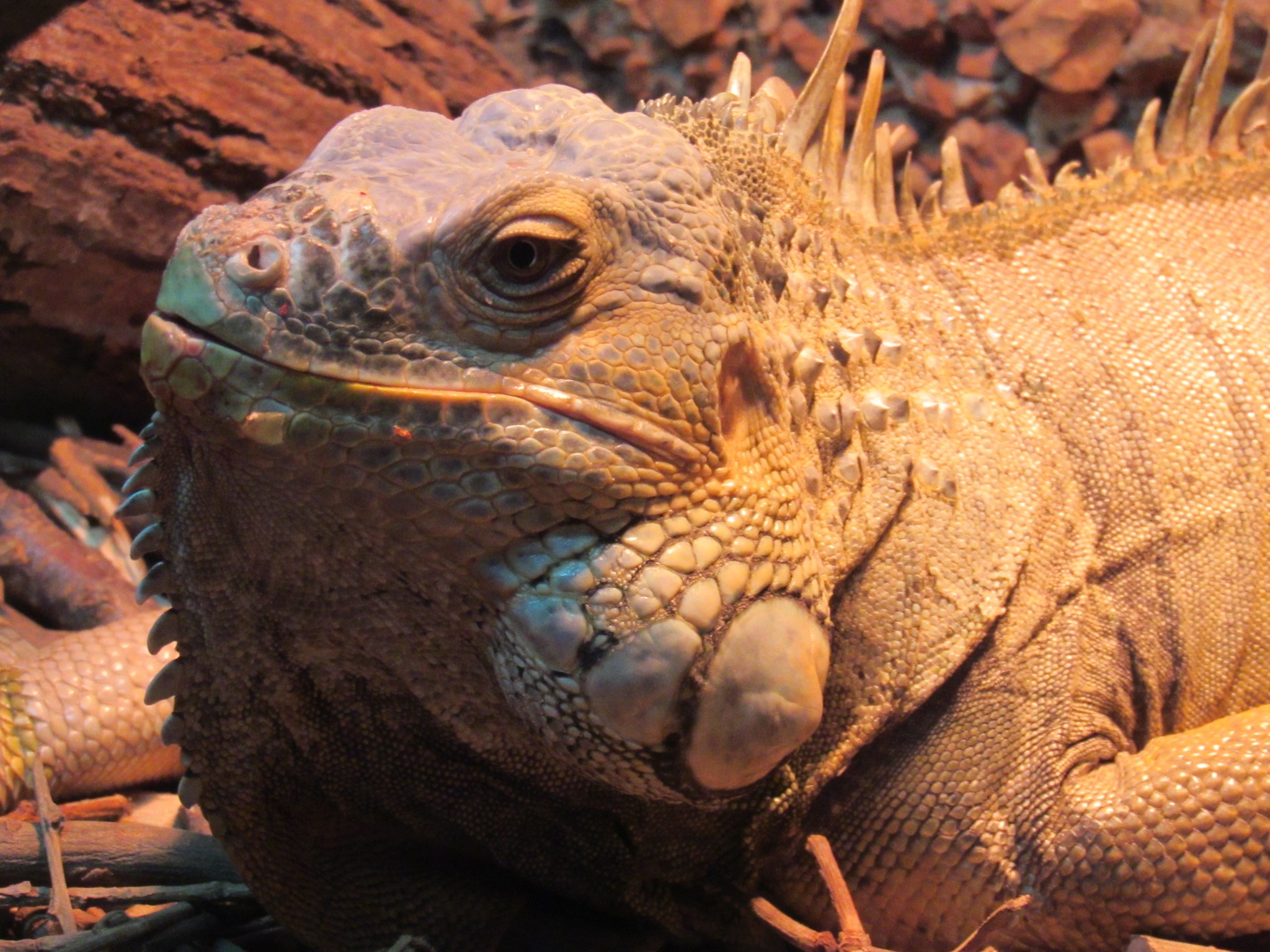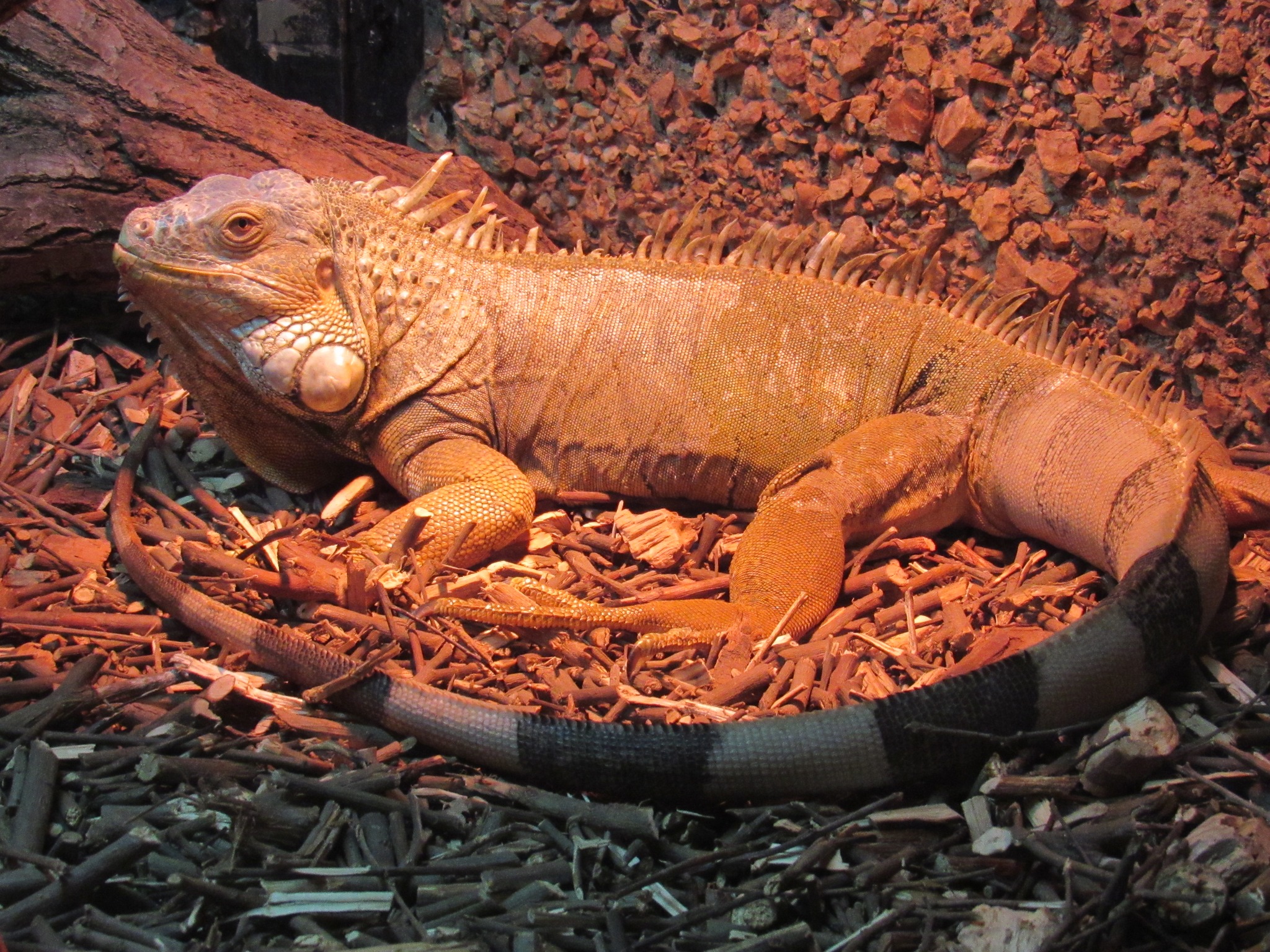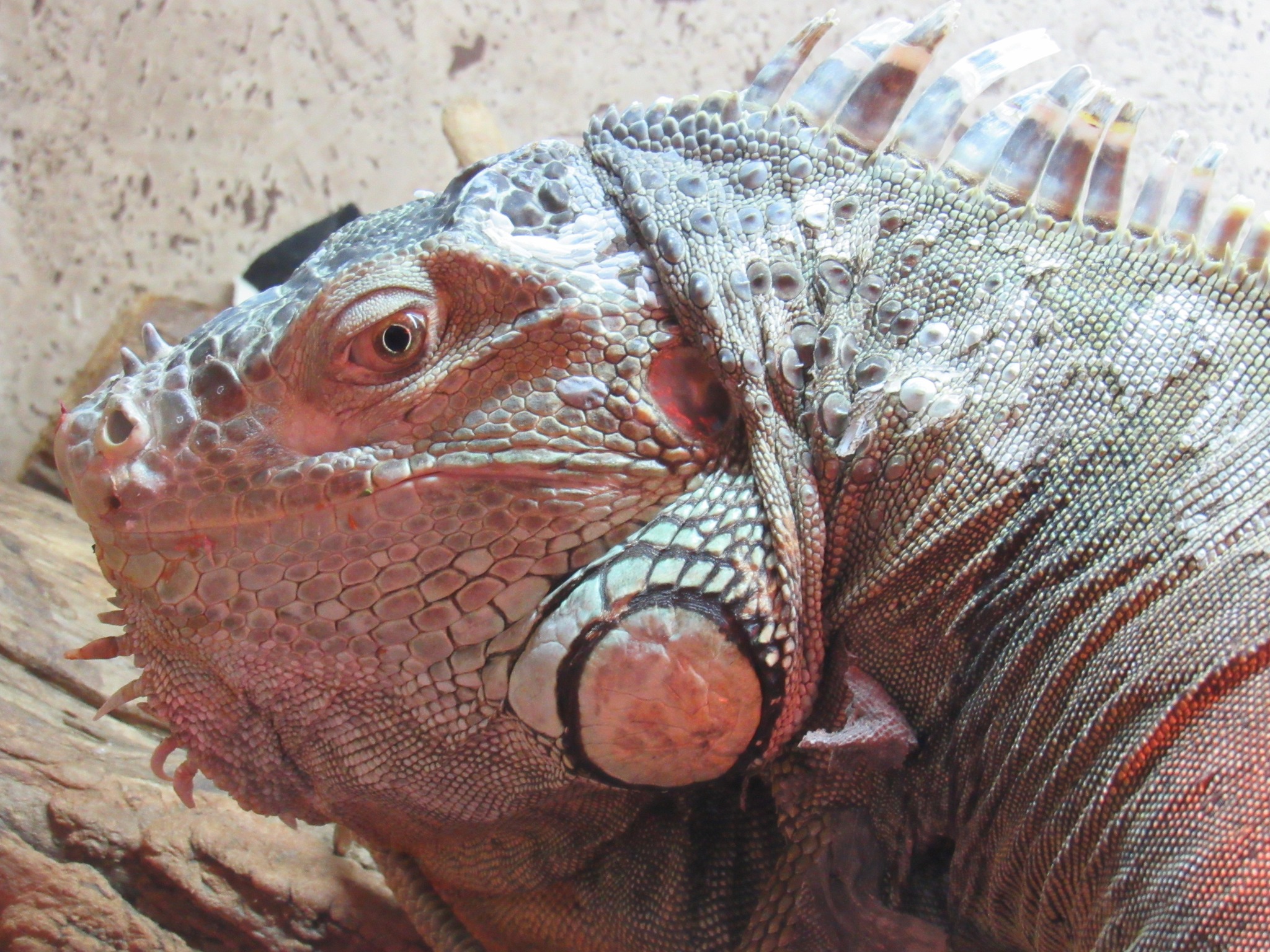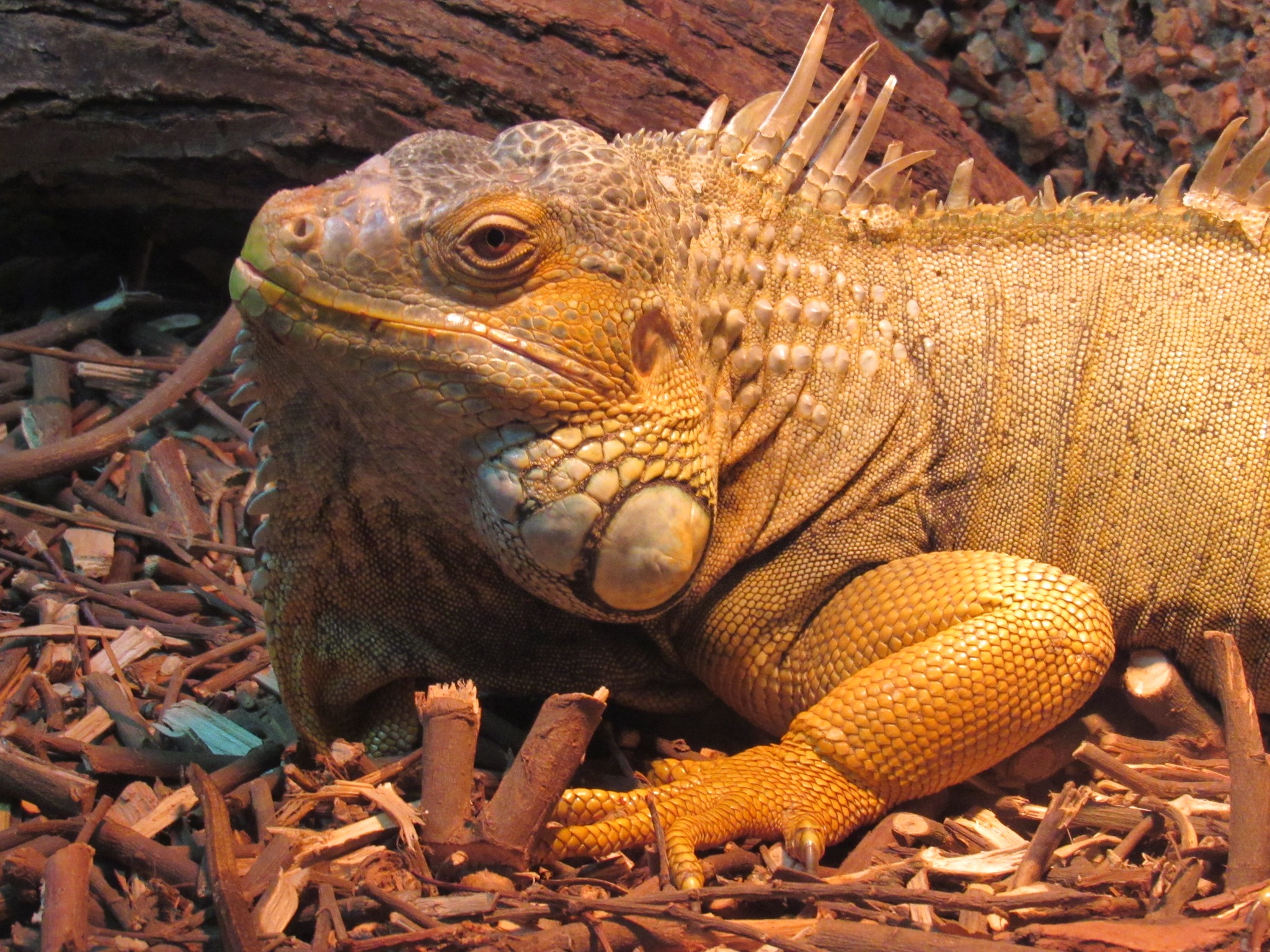Animals that are the symbols of the New Year 2024
"Dragons of Mykolaiv Zoo" – that's what we called a series of educational articles about the animals of our zoo dedicated to the symbol of the New Year 2024. Today we will talk about a large and bright "dragon", which is a popular inhabitant of terrariums – the green iguana.
This lizard, which lives in rainforests from Mexico to the south of Brazil and Paraguay, can reach 2 meters in length. The color of the iguana is bright green in young individuals, greenish-olive in adult iguanas, with age the iguana can become almost orange. A characteristic feature of the appearance of the green iguana is the throat pouch, which is especially expressed in males. Thorns stretch along the back in one row. The animal has long, powerful claws, which are so sharp that even with a light collision they can tear the skin. With the help of a flexible tail, the iguana not only swims well, but is also able to deliver hard, whip-like blows.
Unlike many other lizards, iguanas are primarily herbivores, feeding mainly on leaves, flowers, and fruits. At a young age, in addition to plant food, they can eat insects. With age, iguanas completely switch to plant food. One of the characteristic features of iguanas is an enlarged colon separated by partitions, which acts as a kind of "fermenting tank" for fermentation and further better assimilation of rough vegetable feed. Fermentation is carried out by symbiotic microflora that lives in the intestines of iguanas.
This lizard spends most of its life on trees growing along the banks of rivers. Iguanas are active only during daylight hours. They spend cool nights on thick branches in the middle and lower tier of trees, but with sunrise they try to climb higher, where they warm up for a long time – sunbathing increases body temperature, and ultraviolet radiation produces vitamin D.
Due to their bright coloring, impressive appearance, calm demeanor, interesting behavior and unpretentiousness, green iguanas are often kept indoors as pets. In Mykolaiv Zoo, you can see these large and bright "dragons" in terrariums located in the warm exhibit room of the primate department.



